SAFe Scrum Master Certification TRAINING HIGHLIGHTS IN ESTONIA
The Most Effective SAFe Scrum Master Certification Exam Preparation
SAFe Scrum Master Exam: Examine Your Abilities
Understanding the SAFe Scrum Master Exam
The SAFe Scrum Master exam is a certification designed to assess your knowledge and understanding of the Scaled Agile Framework (SAFe) and its application in Agile project management. It evaluates your ability to facilitate Agile teams within a scaled environment and effectively contribute to the success of SAFe initiatives.
Key Topics Covered in the SAFe Scrum Master Exam
- SAFe Principles and Values: Understanding the core principles and values that underpin SAFe, such as transparency, inspection, adaptation, collaboration, and empowerment.
- Agile Manifesto and Scrum Framework: Knowledge of the Agile Manifesto and the Scrum framework, including roles, artifacts, and ceremonies.
- SAFe Big Picture: Understanding the four levels of SAFe (Team, Program, Value Stream, Portfolio) and their interrelationships.
- SAFe Implementation: Knowledge of the steps involved in implementing SAFe within an organization, including the Lean Portfolio Management (LPM) process and the Program Increment (PI) Planning.
- SAFe Roles: Understanding the roles of various stakeholders within a SAFe environment, such as the Scrum Master, Product Owner, Release Train Engineer, Agile Coach, and System Architect.
- SAFe Artifacts: Knowledge of the SAFe artifacts, such as the Vision, Roadmap, Program Increment (PI) Planning, and Backlog Refinement.
- SAFe Events: Understanding the SAFe events, including PI Planning, Iteration Planning, Daily Scrum, Sprint Review, Sprint Retrospective, and Inspect and Adapt.
- SAFe Continuous Delivery Pipeline: Knowledge of the value stream flow and the tools used for continuous delivery, such as version control, build automation, and deployment pipelines.
- SAFe Leadership: Understanding the leadership principles and practices required for successful SAFe implementation, including servant leadership, empowerment, and continuous improvement.
SAFe Scrum Master Exam Syllabus
The exact syllabus for the SAFe Scrum Master exam may vary slightly, but it typically covers the following areas:
- SAFe Framework Overview
- Agile Principles and Practices
- SAFe Roles and Responsibilities
- SAFe Events and Ceremonies
- SAFe Artifacts
- SAFe Implementation
- SAFe Leadership and Coaching
- SAFe Continuous Delivery Pipeline
Tips for SAFe Scrum Master Exam Preparation
- Understand the Exam Format: Familiarize yourself with the exam format, including the number of questions, time limit, and question types.
- Review Official SAFe Materials: Use the official SAFe training materials, such as the SAFe Scrum Master courseware, to reinforce your understanding of key concepts.
- Practice with Mock Exams: Take advantage of practice exams to assess your knowledge and identify areas where you need to improve.
- Join Study Groups: Collaborate with other SAFe Scrum Master candidates by joining study groups or online forums.
- Seek Mentorship: Find a mentor who has already achieved SAFe Scrum Master certification.
- Stay Updated: Keep up with the latest developments in the Agile and SAFe communities.
SAFe Scrum Master Exam Resources
- Official SAFe Training Materials
- SAFe Practice Exams
- SAFe Community Forums
- SAFe Study Guides and Books
Additional Tips for Exam Success
- Understand the Agile Manifesto: Familiarize yourself with the Agile Manifesto and its underlying principles. This will provide a solid foundation for understanding the SAFe framework.
- Practice Agile Techniques: Gain practical experience with Agile techniques, such as Scrum, Kanban, and Extreme Programming. This will help you apply your knowledge to real-world scenarios.
- Develop Problem-Solving Skills: The SAFe Scrum Master exam often requires you to apply your knowledge to solve hypothetical scenarios. Practice problem-solving techniques to improve your ability to think critically and make informed decisions.
- Network with Other SAFe Professionals: Connect with other SAFe practitioners to share experiences, learn from their insights, and stay updated on industry trends.
Conclusion
The SAFe Scrum Master exam is a challenging but rewarding certification that validates your knowledge and skills in Agile project management within a scaled environment. By understanding the exam syllabus, utilizing effective study strategies, and leveraging available resources, you can increase your chances of success and achieve your certification goals. Remember to stay focused, practice regularly, and seek support from the SAFe community. With consistent effort and a dedicated approach, you can confidently prepare for and pass the SAFe Scrum Master exam.
HIGH DEMAND FOR SAFE (SCALED AGILE FRAMEWORK) PROFESSIONALS IN ESTONIA
SAFe Scrum Master Certification Among the Highest Paying Certifications





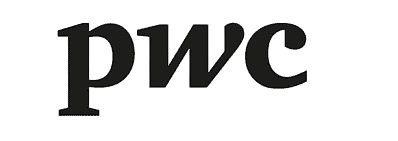
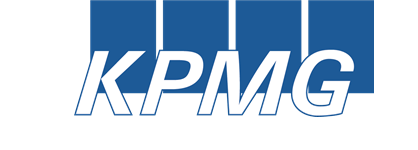



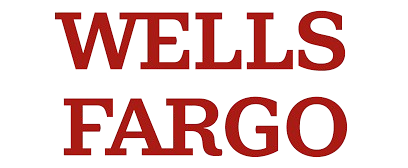
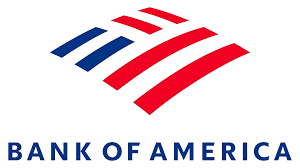

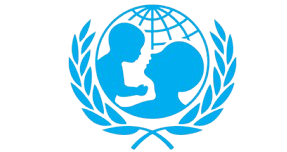


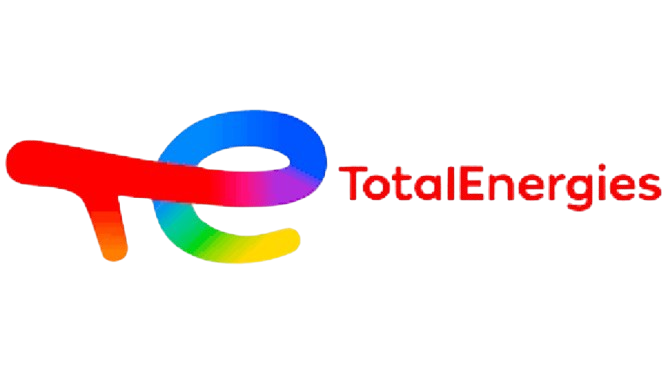




SAFe Scrum Master Exam Preparation and Certification Estonia: A Comprehensive Guide
This guide is an excellent resource for anyone in Estonia seeking to achieve their SAFe Scrum Master certification. It provides a clear and concise overview of the exam, key concepts, study strategies, and valuable resources specific to your location.
Here are some additional points to consider:
Estonia-Specific Information
- Training Providers: Research reputable SAFe Scrum Master certification training providers in Estonia. Look for providers offering both online and in-person options, depending on your learning preference. Some training providers might offer discounts or financial aid options.
- Exam Availability: Confirm the availability of SAFe Scrum Master exams in Estonia. You might need to travel to a nearby country for the physical exam if online proctoring isn't available.
- Networking Opportunities: Explore Estonian Agile or SAFe communities to connect with other professionals for study groups, mentorship, or job opportunities.
Additional Resources in Estonian (if available):
- Look for Estonian translations of official SAFe materials, study guides, or practice exams.
- Join online forums or communities specifically catering to Estonian Agile professionals.
Tailoring Your Preparation
- Focus on Weak Areas: Utilize practice exams to identify your weak areas and dedicate extra study time to those topics.
- Real-World Examples: Find case studies or examples of SAFe implementation in Estonian companies to enhance your understanding.
- Estonian Agile Practices: Research any specific Agile practices or challenges prevalent in Estonian organizations and tailor your preparation accordingly.
Maintaining Certification
- Renewal: Remember to renew your SAFe Scrum Master certification every three years by completing the necessary renewal units or attending workshops.
Conclusion
By combining the information in this guide with Estonia-specific resources and focusing on your individual learning style, you'll be well-equipped to successfully pass the SAFe Scrum Master exam and advance your career in Agile project management within the Estonian market.
Effective Study Strategies
- Understand the Exam Format: Familiarize yourself with the exam format, including the number of questions, time limit, and question types. This will help you manage your time effectively during the exam.
- Review Official SAFe Materials: The official SAFe training materials provide a comprehensive overview of the framework. Carefully review the courseware, handouts, and practice exams to reinforce your understanding of key concepts.
- Create a Study Plan: Develop a structured study plan that covers all the exam topics. Allocate sufficient time for each topic based on your understanding and the exam's weighting.
- Practice with Mock Exams: Take advantage of practice exams to assess your knowledge and identify areas where you need to improve. Analyze your performance to pinpoint weaknesses and focus your studies accordingly.
- Join Study Groups: Collaborate with other SAFe Scrum Master candidates by joining study groups or online forums. Discuss challenging topics, share insights, and learn from each other's experiences.
- Seek Mentorship: Find a mentor who has already achieved SAFe Scrum Master certification. They can provide guidance, answer your questions, and offer valuable advice.
- Stay Updated: Keep up with the latest developments in the Agile and SAFe communities. Attend webinars, conferences, and read industry publications to stay informed about best practices and emerging trends.
Valuable Resources
- Scaled Agile Framework (SAFe) website: https://scaledagile.com/
- SAFe Community: https://community.scaledagile.com/
- SAFe Certified Scrum Master (CSM) Course: https://scaledagile.com/
- SAFe Practice Exams: https://scaledagile.com/wp-content/uploads/2017/06/SA4_Sample.pdf
- SAFe Study Guides and Books: https://support.scaledagile.com/s/article/Exam-Details-Leading-SAFe-SAFe-Agilist-6-0
- Online Forums and Communities: Participate in online discussions and forums to connect with other SAFe enthusiasts.
Additional Tips
- Understand the Agile Manifesto: Familiarize yourself with the Agile Manifesto and its underlying principles. This will provide a solid foundation for understanding the SAFe framework.
- Practice Agile Techniques: Gain practical experience with Agile techniques, such as Scrum, Kanban, and Extreme Programming. This will help you apply your knowledge to real-world scenarios.
- Learn about Scaled Agile Practices: Understand the specific practices and tools used in Scaled Agile, such as Lean Portfolio Management, Value Stream Mapping, and Program Increment Planning.
- Develop Problem-Solving Skills: The SAFe Scrum Master exam often requires you to apply your knowledge to solve hypothetical scenarios. Practice problem-solving techniques to improve your ability to think critically and make informed decisions.
- Network with Other SAFe Professionals: Connect with other SAFe practitioners to share experiences, learn from their insights, and stay updated on industry trends.
SAFe Scrum Master Preparation and Certification
Understanding the SAFe Scrum Master Role
A SAFe Scrum Master is a pivotal figure within a Scaled Agile Framework (SAFe) organization, responsible for facilitating Agile teams and ensuring the successful implementation of Agile principles and practices. They play a crucial role in guiding teams, removing impediments, and fostering a collaborative environment that promotes continuous improvement.
Key Responsibilities of a SAFe Scrum Master:
- Facilitate Agile Teams: Guide teams in applying Agile practices, such as Scrum, Kanban, and Extreme Programming, within a scaled context.
- Remove Impediments: Identify and eliminate obstacles that hinder team progress, ensuring a smooth flow of work.
- Coach Agile Teams: Provide guidance and support to team members, helping them develop Agile skills and mindset.
- Foster Collaboration: Promote collaboration and teamwork among team members, stakeholders, and other Agile teams.
- Ensure Compliance with SAFe Principles: Ensure that the team adheres to the principles and practices of the Scaled Agile Framework.
- Support Program Increment Planning: Contribute to the Program Increment (PI) Planning process, helping to align teams and establish objectives.
- Facilitate Continuous Improvement: Encourage a culture of continuous improvement within the team, identifying areas for enhancement and implementing effective solutions.
Preparing for the SAFe Scrum Master Certification
To successfully achieve the SAFe Scrum Master certification, thorough preparation is essential. Here are some key steps to consider:
- Understand the SAFe Framework: Gain a deep understanding of the Scaled Agile Framework, including its principles, values, and four levels (Team, Program, Value Stream, Portfolio).
- Master Agile Fundamentals: Review the Agile Manifesto and Scrum framework, including roles, artifacts, and ceremonies.
- Study SAFe Roles and Responsibilities: Familiarize yourself with the roles of various stakeholders within a SAFe environment, such as the Product Owner, Release Train Engineer, and Agile Coach.
- Learn SAFe Practices: Understand the specific practices and tools used in Scaled Agile, including Lean Portfolio Management, Value Stream Mapping, and Program Increment Planning.
- Practice Problem-Solving: Develop problem-solving skills to address challenges that may arise in a scaled Agile environment.
- Review SAFe Materials: Utilize official SAFe training materials, study guides, and practice exams to reinforce your learning.
- Join Study Groups: Connect with other SAFe Scrum Master candidates to discuss topics, share insights, and learn from each other.
- Seek Mentorship: Find a mentor who has already achieved SAFe Scrum Master certification. They can provide guidance, answer your questions, and offer valuable advice.
- Stay Updated: Keep up with the latest developments in the Agile and SAFe communities. Attend webinars, conferences, and read industry publications to stay informed about best practices and emerging trends.
Certification Process
- Attend a SAFe Scrum Master Course: Enroll in a certified SAFe Scrum Master course offered by Scaled Agile or authorized training partners.
- Prepare for the Exam: Study the course material, practice with mock exams, and review key concepts.
- Take the Exam: The SAFe Scrum Master exam is an online multiple-choice test that assesses your knowledge of the framework.
- Receive Certification: Upon successfully passing the exam, you will receive the SAFe Scrum Master certification.
Benefits of SAFe Scrum Master Certification
- Career Advancement: The certification can enhance your career prospects and open doors to new opportunities.
- Increased Job Security: As Agile methodologies continue to gain popularity, certified SAFe Scrum Masters are in high demand.
- Enhanced Skills: The certification validates your knowledge of Agile principles and practices, making you a valuable asset to any organization.
- Global Recognition: SAFe is a globally recognized framework, and the certification is respected worldwide.
- Improved Team Performance: By facilitating Agile teams and removing impediments, certified SAFe Scrum Masters can help teams achieve higher levels of productivity and efficiency.
- Contribution to Organizational Success: SAFe Scrum Masters play a vital role in implementing and scaling Agile practices within organizations, contributing to overall business success.
Conclusion
By preparing thoroughly and understanding the key concepts of the SAFe Scrum Master role, you can increase your chances of successfully achieving certification. This certification will equip you with the skills and knowledge needed to facilitate Agile teams, contribute to the success of scaled Agile initiatives, and advance your career in the field of Agile project management.
WHY SCHOLARACAD FOR SAFe Scrum Master Certification TRAINING IN ESTONIA
The ScholarAcad Advantage
SAFe Scrum Master Course Cost in Estonia: A Comprehensive Guide
Understanding the Cost of SAFe Scrum Master Certification
The cost of a SAFe Scrum Master course in Estonia can vary significantly depending on several factors, including the training provider, course format (online or in-person), and the specific course content. To make an informed decision, it's essential to understand the different cost components and factors that influence the overall price.
Key Cost Components:
- Course Fees: This is the primary cost component, covering the instructional materials, access to online resources, and the certification exam.
- Travel and Accommodation: If you opt for an in-person training, you may incur additional expenses for travel and accommodation.
- Certification Exam Fees: The cost of the SAFe Scrum Master certification exam is typically included in the course fees, but it's essential to verify this with the training provider.
- Study Materials: While some training providers include study materials in the course fees, others may require you to purchase them separately.
Factors Influencing Course Cost:
- Training Provider: Different training providers may offer varying pricing structures. Reputable providers with experienced instructors and comprehensive course content may charge higher fees.
- Course Format: Online courses generally have lower costs compared to in-person training due to the elimination of travel and accommodation expenses. However, the quality of the online experience can vary.
- Course Content: The depth and breadth of the course content can also impact the price. Courses that cover a wider range of topics or offer more in-depth training may be more expensive.
- Location: The cost of living in different regions of Estonia can influence the overall course cost, especially for in-person training.
SAFe Scrum Master Course Fees in Estonia: A Breakdown
While it's difficult to provide an exact price range without knowing the specific training provider and course details, here's a general breakdown of potential costs:
- Online Courses:
- Budget-friendly: Around €1,000 - €1,500
- Mid-range: €1,500 - €2,000
- Premium: €2,500 or more
- In-Person Training:
- Budget-friendly: €1,500 - €2,500 (excluding travel and accommodation)
- Mid-range: €2,500 - €3,500 (excluding travel and accommodation)
- Premium: €4,000 or more (excluding travel and accommodation)
Please note that these are approximate figures, and actual costs may vary. It's always recommended to compare prices from multiple training providers and consider the value offered by each course.
Tips for Finding Affordable SAFe Scrum Master Training:
- Compare Prices: Research different training providers and compare their course fees, including any hidden costs or additional charges.
- Look for Discounts: Many training providers offer discounts for group registrations or early bird bookings.
- Consider Online Options: Online courses can be a more affordable option, especially if you factor in travel and accommodation costs.
- Check for Financial Aid: Some organizations or companies may offer financial assistance for professional development courses.
- Negotiate: If you're planning to enroll in a large group or have a specific budget, consider negotiating with the training provider to see if they can offer a discount or payment plan.
Additional Considerations:
- Course Quality: While cost is an important factor, it's also crucial to consider the quality of the training. Look for providers with experienced instructors, a strong reputation, and positive reviews from previous students.
- Certification Validity: Ensure that the training provider is authorized to offer the SAFe Scrum Master certification. This will guarantee that your certification is recognized and valid.
- Post-Course Support: Consider the level of post-course support provided by the training provider. This can include access to online resources, mentoring, or networking opportunities.
Beyond these factors, here are some additional tips for finding affordable SAFe Scrum Master training in Estonia:
- Research Government Grants or Subsidies: The Estonian government may offer grants or subsidies to support professional development, including certifications like SAFe Scrum Master. Check with relevant government agencies or educational institutions to see if you qualify for any financial assistance.
- Consider Nonprofit Organizations: Some nonprofit organizations may offer SAFe Scrum Master training at discounted rates or even for free. Research local nonprofit organizations that focus on IT education or professional development.
- Look for Corporate Partnerships: Many companies partner with training providers to offer discounted or free SAFe Scrum Master training to their employees. If you work for a company that has such partnerships, inquire about the available options.
- Join Online Communities: Connect with other professionals in the Agile community in Estonia through online forums or social media groups. They may be able to share information about affordable training options or recommend reputable providers.
- Consider Self-Study: While self-study can be challenging, it can be a cost-effective option. Explore online resources, study guides, and practice exams to prepare for the SAFe Scrum Master certification on your own.
By carefully considering these factors and following these tips, you can find a SAFe Scrum Master course that fits your budget and provides the necessary training to achieve your career goals in Estonia.
Course Structure and Fees for SAFe Scrum Master Certification in Estonia
Course Structure
The SAFe Scrum Master course typically follows a structured format that covers the key concepts and principles of the Scaled Agile Framework (SAFe). The course content may vary slightly depending on the training provider, but generally includes the following topics:
- SAFe Principles and Values: Understanding the core principles and values that underpin SAFe, such as transparency, inspection, adaptation, collaboration, and empowerment.
- Agile Manifesto and Scrum Framework: Knowledge of the Agile Manifesto and the Scrum framework, including roles (Product Owner, Scrum Master, Development Team), artifacts (Product Backlog, Sprint Backlog, Increment), and ceremonies (Sprint Planning, Daily
Scrum, Sprint Review, Sprint Retrospective).
- SAFe Big Picture: Understanding the four levels of SAFe (Team, Program, Value Stream, Portfolio) and their interrelationships.
- SAFe Implementation: Knowledge of the steps involved in implementing SAFe within an organization, including the Lean Portfolio Management (LPM) process and the Program Increment (PI) Planning.
- SAFe Roles: Understanding the roles of various stakeholders within a SAFe environment, including the Scrum Master, Product Owner, Release Train Engineer, Agile Coach, and System Architect.
- SAFe Artifacts: Knowledge of the SAFe artifacts, such as the Vision, Roadmap, Program Increment (PI) Planning, and Backlog Refinement.
- SAFe Events: Understanding the SAFe events, including PI Planning, Iteration Planning, Daily Scrum, Sprint Review, Sprint Retrospective, and Inspect and Adapt.
- SAFe Continuous Delivery Pipeline: Knowledge of the value stream flow and the tools used for continuous delivery, such as version control, build automation, and deployment pipelines.
- SAFe Leadership: Understanding the leadership principles and practices required for successful SAFe implementation, including servant leadership, empowerment, and continuous improvement.
Course Fees
The fees for SAFe Scrum Master courses in Estonia can vary depending on several factors, including:
- Training Provider: Different training providers may charge different fees for their courses. Reputable providers with experienced instructors and comprehensive curriculum may charge higher fees.
- Course Format: The format of the course (in-person, online, or blended) can also affect the cost. In-person courses typically involve higher fees due to venue rental, accommodation, and travel expenses.
- Course Duration: Longer courses with more in-depth coverage may have higher fees compared to shorter courses.
- Location: Course costs can vary depending on the location within Estonia. Courses held in major cities may be more expensive due to higher overhead costs.
- Additional Services: Some training providers may offer additional services, such as exam preparation materials, job placement assistance, or ongoing support, which can increase the overall cost.
Typical Fee Ranges
While specific fees can vary widely, you can expect to pay anywhere from [insert approximate range of fees] for a SAFe Scrum Master course in Estonia.
Tips for Finding Affordable Courses
- Compare Prices: Research different training providers and compare their course fees, curriculum, and instructor credentials.
- Look for Discounts: Some providers may offer discounts for group registrations or early bird bookings.
- Consider Online Options: Online courses can often be more affordable than in-person training.
- Check for Government Funding: If you are eligible, you may be able to access government funding to help offset the cost of the course.
Remember to carefully consider your budget and learning goals when choosing a SAFe Scrum Master course. By understanding the course structure and fees, you can make an informed decision and find a course that suits your needs and fits within your budget.
SAFe Scrum Master Certification CERTIFICATION COURSE REVIEWS IN ESTONIA
Our Learners Love Us

Michael Ryaboy

Tarzine Rack

Adam Nasir

Pete

John

Steve Nouri

Patric

Edward A
SAFe Scrum Master Certification COURSE CURRICULUM
1. Module 1: Introduction of Scrum in SAFe
- Concepts of Basic Agile Development
- Basics of Scrum
- Establish Agile Team in SAFe Enterprises
2. Module 2: Scrum Master Role Characterization
- Scrum Master Responsibilities
- Effective Scrum Master Characteristics
- High-performing Teams
- Use Powerful Questions to Coach Agile Team
- Team Events
- Cross Team Collaboration
- Resolve Conflicts in Teams
3. Module 3: Experience PI Planning
- Basics of PI Planning
- Drafting PI Planning
- Business Value and Final Plans
- PI Objectives and Final Plan Review
- Facilitate PI Planning
4. Module 4: Facilitate Iteration Execution
- Plan Iteration
- Track Progress of Iteration
- Refine Backlogs
- Facilitation Iteration Reviews
- Implement Relentless Improvement
- Supports Release-on-Demand and DevOps
5. Module 5: Finish PI
- Coach IP Iteration
- Preparing Team to Inspect & Adapt Event
6. Module 6: Practice SAFe
- SAFe Practice in Organizations
View More
SAFe Scrum Master Certification CERTIFICATION PATH
Your Path to Acing Your SAFe Scrum Master Certification Exam

Grasp the overarching structure and how different components interconnect.
Understand the Scrum framework, its roles, events, artifacts, and ceremonies.
Grasp the principles and practices of Kanban for visualizing work and flow.
Understand the responsibilities of a SAFe Scrum Master.
Believe in continuous improvement and learning.
Participate in simulations, case studies, and practical exercises.
Practice with Mock Exams and Take your exam.
SAFe Scrum Master Practice Tests: Sharpen Your Knowledge
The Importance of SAFe Scrum Master Practice Tests
Practice tests are invaluable tools for preparing for the SAFe Scrum Master exam. They offer several key benefits, including:
- Assessment of Knowledge: Practice tests help you gauge your understanding of the SAFe framework, Agile principles, and the role of a SAFe Scrum Master. They can identify gaps in your knowledge and highlight areas where you need to focus your studies.
- Identification of Weak Areas: By analyzing your performance on practice tests, you can pinpoint specific topics or concepts that you struggle with. This allows you to tailor your study efforts and address your weaknesses effectively.
- Familiarity with Exam Format: Practice tests can help you get accustomed to the exam structure, question types, and time constraints. This familiarity can reduce test anxiety and improve your performance on the actual exam.
- Building Confidence: Practicing with realistic questions can boost your confidence and reduce exam anxiety. As you become more comfortable with the material and the exam format, you'll feel more prepared and confident in your ability to succeed.
- Time Management Practice: Taking practice tests under timed conditions can help you improve your time management skills. This is crucial for the actual exam, where you'll need to answer a large number of questions within a limited time frame.
- Feedback and Improvement: Practice tests often provide detailed explanations for correct and incorrect answers. This can help you understand the underlying concepts and avoid making similar mistakes in the future.
In conclusion, practice tests are essential for success in the SAFe Scrum Master exam. By using them effectively, you can assess your knowledge, identify areas for improvement, build confidence, and increase your chances of passing the exam.
Tips for Effective Practice Test Preparation
- Review the Syllabus: Ensure that you have a thorough understanding of the SAFe Scrum Master syllabus and the topics covered in the exam.
- Use Official SAFe Materials: Refer to the official SAFe training materials and study guides to reinforce your learning.
- Practice Regularly: Practice with a variety of practice tests to improve your knowledge and skills.
- Analyze Your Performance: Review your performance on practice tests to identify areas where you need to focus your studies.
- Seek Feedback: If possible, seek feedback from a mentor or study group to get insights into your performance and areas for improvement.
- Create a Study Plan: Develop a structured study plan that covers all the topics in the SAFe Scrum Master syllabus and allocate sufficient time for practice tests.
- Simulate Exam Conditions: When taking practice tests, try to create a similar environment to the actual exam, such as a quiet location and a time limit.
Conclusion
SAFe Scrum Master practice tests are an essential tool for preparing for the certification exam. By using a variety of practice tests and following effective preparation strategies, you can enhance your knowledge, build confidence, and increase your chances of success. Remember to practice regularly, analyze your performance, and seek feedback to maximize the benefits of using practice tests.
The Importance of Practice Tests for SAFe Scrum Master Certification
Practice tests play a crucial role in preparing for the SAFe Scrum Master certification exam. They offer several benefits that can significantly enhance your chances of success:
- Assessment of Knowledge: Practice tests help you gauge your understanding of the Scaled Agile Framework (SAFe) and identify areas where you may need to focus your studies. By taking practice exams, you can assess your strengths and weaknesses and tailor your preparation accordingly.
- Identification of Weaknesses: Practice tests can highlight areas where you may be struggling. By identifying these weaknesses, you can focus your efforts on improving your understanding of specific topics and concepts.
- Building Confidence: Practicing with mock exams can help you build confidence and reduce exam anxiety. Familiarity with the exam format and question types can help you feel more prepared and relaxed on exam day.
- Familiarization with Exam Format: Practice tests allow you to become accustomed to the exam format, question types, and time constraints. This familiarity can help you manage your time effectively and avoid surprises on exam day.
- Improvement in Time Management: Practicing under timed conditions can help you develop effective time management skills. This is especially important for the SAFe Scrum Master exam, which has a specific time limit.
- Gaining Insights into Exam Difficulty: Practice tests can give you an idea of the difficulty level of the actual exam. This information can help you adjust your preparation accordingly and avoid being caught off guard.
- Receiving Feedback: Many practice tests provide detailed explanations for incorrect answers. This feedback can help you understand the concepts better and avoid making similar mistakes in the future.
In conclusion, practice tests are an essential tool for preparing for the SAFe Scrum Master certification exam. By using practice tests effectively, you can assess your knowledge, identify weaknesses, build confidence, and increase your chances of success.
WHAT YOU WILL LEARN
Learning Objectives
The Benefits of SAFe Scrum Master Certification in Estonia
Obtaining a SAFe Scrum Master certification can significantly enhance your career prospects and open up new opportunities within the field of Agile project management in Estonia. As Agile methodologies continue to gain traction in the country, this certification can provide a competitive edge and position you as a valuable asset to organizations seeking to implement and scale Agile practices.
SAFe Scrum Master Exam Preparation and Certification in Estonia: A Comprehensive Guide
Understanding the SAFe Scrum Master Exam
The SAFe Scrum Master exam is a crucial step towards obtaining the coveted SAFe Scrum Master certification. This certification validates your knowledge and skills in leading and facilitating Agile teams within large-scale organizations. To succeed in the exam, a thorough understanding of the SAFe framework, Agile principles, and the role of a SAFe Scrum Master is essential.
Key Exam Topics:
- SAFe Principles: Understanding the foundational principles of SAFe, such as customer satisfaction, collaboration, and continuous improvement.
- SAFe Framework: Knowledge of the four levels of SAFe (Team, Program, Value Stream, and Portfolio) and their respective roles and responsibilities.
- SAFe Events: Familiarity with key SAFe events, such as PI Planning, Inspect and Adapt, and Iteration Review.
- SAFe Artifacts: Understanding SAFe artifacts, including the Vision Board, Backlog, and Program Kanban.
- SAFe Leadership: Knowledge of servant leadership principles and their application to the SAFe Scrum Master role.
- Agile Principles and Practices: Understanding Agile methodologies, such as Scrum, Kanban, and Extreme Programming, and their application within SAFe.
Exam Preparation Strategies
- SAFe Certification Course: Enrolling in a reputable SAFe Scrum Master certification course is highly recommended. These courses provide structured learning, expert guidance, and hands-on exercises to solidify your understanding of SAFe concepts.
- Study Materials: Utilize official SAFe study materials, such as the SAFe Scrum Master Study Guide and practice exams. These resources cover all the essential topics and provide valuable insights into the exam format.
- Practice Exams: Take as many practice exams as possible to familiarize yourself with the exam structure, question types, and time management. Practice exams will also help you identify areas where you need to focus your studies.
- Study Groups: Joining a study group can be beneficial for discussing concepts, sharing insights, and staying motivated. Collaborating with other learners can enhance your understanding and provide different perspectives.
- SAFe Community: Engage with the SAFe community through online forums, social media groups, and conferences. Participating in discussions and learning from experienced practitioners can broaden your knowledge and address any questions you may have.
Additional Tips
- Prioritize Key Concepts: Focus on the areas of the exam that are most heavily weighted.
- Use Mnemonic Devices: Create memory aids to help you remember key information.
- Take Breaks: Avoid burnout by taking regular breaks during your study sessions.
- Stay Positive: Maintain a positive mindset and believe in your ability to succeed.
Benefits of SAFe Scrum Master Certification in Estonia
- Career Advancement: The certification can open doors to new roles and responsibilities within organizations.
- Increased Earning Potential: Certified SAFe Scrum Masters are in high demand, leading to higher salaries.
- Enhanced Job Security: The certification provides a competitive advantage in the job market.
- Improved Job Performance: A deeper understanding of SAFe can lead to more effective Agile project management.
- Leadership Development: The certification fosters essential leadership skills.
- Networking Opportunities: Connect with other certified SAFe Scrum Masters.
- Professional Recognition: The certification enhances your professional reputation.
- Organizational Impact: Contribute to organizational agility and success.
By following these tips and utilizing the available resources, you can increase your chances of success in the SAFe Scrum Master exam and achieve your certification goals.
Beyond these core benefits, SAFe Scrum Master certification can also:
- Enhance your problem-solving and decision-making abilities: The SAFe framework provides a structured approach to problem-solving and decision-making, which can benefit you both in your professional and personal life.
- Improve your communication and collaboration skills: As a SAFe Scrum Master, you'll need to effectively communicate with various stakeholders and collaborate with cross-functional teams. The certification can help you develop these essential skills.
- Foster a positive and productive work environment: By implementing Agile practices and promoting collaboration, you can create a more positive and productive work environment for your team.
- Increase your adaptability: The Agile methodology emphasizes adaptability and responsiveness to change. As a certified SAFe Scrum Master, you'll be better equipped to navigate the challenges and uncertainties of today's rapidly evolving business landscape.
- Contribute to organizational agility: SAFe is a framework for scaling Agile at the enterprise level. By becoming a certified SAFe Scrum Master, you can help your organization become more agile and responsive to market demands.
- Strengthen your understanding of Agile principles: The SAFe Scrum Master certification provides a deep dive into the core principles of Agile development, such as customer satisfaction, collaboration, and continuous improvement. This knowledge can be invaluable for leading and facilitating Agile teams.
- Expand your career opportunities: The certification can open doors to a wider range of roles and responsibilities within the Agile project management field, including Agile coach, Agile transformation consultant, or Agile program manager.
- Demonstrate your commitment to professional development: Obtaining the SAFe Scrum Master certification shows that you are dedicated to continuous learning and staying up-to-date with the latest trends in Agile project management.
- Improve your leadership skills: The certification can help you develop essential leadership qualities such as empathy, vision, and the ability to inspire others.
- Enhance your problem-solving and decision-making abilities: The SAFe framework provides a structured approach to problem-solving and decision-making, which can benefit you both in your professional and personal life.
In addition to the benefits mentioned above, SAFe Scrum Master certification can also:
- Foster a culture of innovation and continuous improvement: By implementing SAFe principles, organizations can create a culture that encourages experimentation, learning, and continuous improvement.
- Improve team morale and engagement: Agile methodologies can lead to increased job satisfaction and employee engagement, which can improve team morale and productivity.
- Enhance organizational resilience: SAFe can help organizations become more resilient to change and adapt to new challenges.
- Improve customer satisfaction: By delivering value to customers more quickly and efficiently, organizations can improve customer satisfaction and loyalty.
- Strengthen your network of Agile professionals: The SAFe certification community provides opportunities to connect with other certified Scrum Masters and learn from their experiences.
In conclusion, the SAFe Scrum Master certification offers numerous benefits for professionals in Estonia seeking to advance their careers in Agile project management. By obtaining this certification, you can enhance your skills, improve your job prospects, and contribute to the success of organizations adopting Agile methodologies.
Scrum Master Certification Offers Numerous Benefits for Professionals:
The Scaled Agile Framework (SAFe) Scrum Master certification offers numerous benefits for professionals seeking to advance their careers in Agile project management within large-scale organizations. Here are some of the key advantages:
Career Advancement:
- Increased Job Opportunities: Certified SAFe Scrum Masters are in high demand, opening doors to new roles and responsibilities within organizations.
- Higher Earning Potential: The certification can lead to increased earning potential and better compensation packages.
- Enhanced Job Security: As Agile methodologies continue to gain popularity, certified SAFe Scrum Masters have a strong job market advantage.
Professional Development:
- Specialized Expertise: The certification demonstrates your deep understanding of the Scaled Agile Framework and Agile principles.
- Leadership Development: SAFe Scrum Masters develop essential leadership skills, such as servant leadership, facilitation, and conflict resolution.
- Continuous Learning: The certification provides a foundation for pursuing advanced SAFe certifications and staying updated on Agile trends.
Organizational Impact:
- Improved Team Performance: SAFe Scrum Masters can help teams adopt Agile practices effectively, leading to increased productivity and efficiency.
- Scaled Agile Success: The certification equips you to support organizations in implementing and scaling Agile at an enterprise level.
- Enhanced Organizational Agility: SAFe Scrum Masters contribute to creating more agile and responsive organizations.
Personal Benefits:
- Job Satisfaction: The ability to successfully lead and facilitate Agile teams can be highly rewarding.
- Networking Opportunities: The certification provides access to a global community of Agile professionals.
- Professional Recognition: SAFe Scrum Master certification enhances your professional reputation and credibility.
Additional Benefits:
- Improved Communication and Collaboration: SAFe Scrum Masters develop strong interpersonal skills and the ability to work effectively with teams of varying sizes and backgrounds.
- Problem-Solving and Decision-Making: The certification equips you with the skills to analyze complex situations, identify root causes, and implement effective solutions.
- Cultural Sensitivity: SAFe Scrum Masters learn to be culturally sensitive and aware of the diverse perspectives and backgrounds of team members.
- Ethical Considerations: The certification emphasizes ethical principles and professionalism in the Agile project management context.
In conclusion, the SAFe Scrum Master certification offers a wide range of benefits for professionals seeking to advance their careers and contribute to the success of Agile organizations. By obtaining this certification, you can enhance your skills, improve your job prospects, and contribute to the success of organizations adopting Agile methodologies.
WHO CAN ATTEND THE SAFe Scrum Master Certification CERTIFICATION TRAININGN IN ESTONIA
Who This Course Is For

PREREQUISITES FOR SAFe Scrum Master Certification IN ESTONIA
Prerequisites and Eligibility
Familiarity with Agile principles and the Scrum framework is beneficial.
Completion of the SAFe for Teams course is required to establish a foundation in SAFe concepts.
Passing the SAFe Scrum Master exam (SSM) validates your understanding of SAFe and Scrum principles.
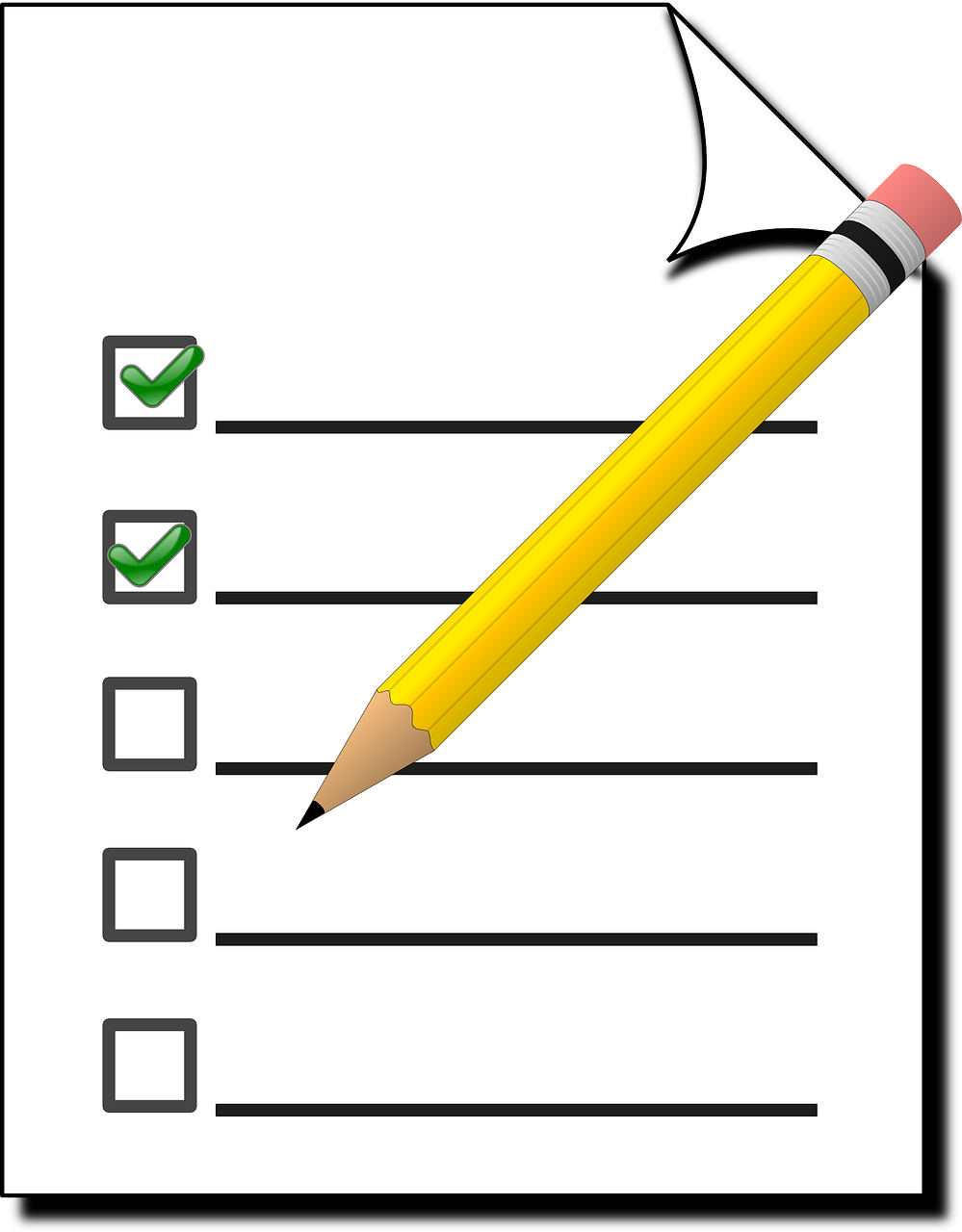
SAFe Scrum Master Certification CERTIFICATION FAQS
1. What is a SAFe Scrum Master?
A SAFe Scrum Master is a professional who facilitates Agile teams within the Scaled Agile Framework (SAFe) to deliver value efficiently. They coach teams, remove impediments, and ensure alignment with SAFe principles.
2. What is the difference between a Scrum Master and a SAFe Scrum Master?
A traditional Scrum Master focuses on a single team, while a SAFe Scrum Master works within the broader SAFe framework, often supporting multiple teams and aligning them with the Program Increment (PI) objectives.
3. What are the key responsibilities of a SAFe Scrum Master?
- Facilitating Agile ceremonies (e.g., Sprint Planning, Daily Standups, Retrospectives).
- Removing impediments for the team.
- Coaching teams on Agile principles and practices.
- Supporting the Product Owner in backlog refinement.
- Ensuring alignment with PI objectives.
4. What skills are required to become a successful SAFe Scrum Master?
- Strong facilitation and communication skills.
- Deep understanding of Agile and SAFe principles.
- Problem-solving and conflict resolution abilities.
- Leadership and coaching skills.
- Knowledge of Lean-Agile practices.
5. Is certification necessary to become a SAFe Scrum Master?
While not mandatory, certification (e.g., SAFe Scrum Master Certification) is highly recommended as it validates your knowledge and increases employability.
6. What is the SAFe Scrum Master Certification?
The SAFe Scrum Master Certification (SSM) is a credential offered by Scaled Agile, Inc. It demonstrates expertise in applying Scrum within the SAFe framework.
7. How do I get certified as a SAFe Scrum Master?
- Attend the official SAFe Scrum Master course (2-day training).
- Pass the online exam.
- Maintain certification through continuous learning and renewal.
8. What is the cost of the SAFe Scrum Master certification?
The cost is typically around $995-$1,295 for the 2-day course, depending on the training provider.
9. How long does the SAFe Scrum Master certification last?
The certification is valid for 1 year and requires renewal annually by earning 10 continuing education units (SEUs) and paying a renewal fee.
10. What is the average salary of a SAFe Scrum Master?
The average salary varies by location and experience:
- USA : $90,000–$120,000 per year.
- India : ₹10–20 lakhs per year.
- Europe : €60,000–€90,000 per year.
11. What industries hire SAFe Scrum Masters?
Industries include:
- IT and software development.
- Financial services.
- Healthcare.
- Manufacturing.
- Government and defense.
12. What is the career path for a SAFe Scrum Master?
Junior Scrum Master → SAFe Scrum Master → Release Train Engineer (RTE) → Agile Coach → Transformation Lead.
13. Can a SAFe Scrum Master work remotely?
Yes, many organizations allow remote work, especially in tech companies or those with distributed teams.
14. What tools should a SAFe Scrum Master be familiar with?
- Jira, Azure DevOps, or Rally for Agile project management.
- Confluence or SharePoint for documentation.
- Collaboration tools like Slack, Microsoft Teams, or Zoom
15. What is a Release Train Engineer (RTE), and how does it relate to a SAFe Scrum Master?
An RTE facilitates Agile Release Trains (ARTs) at the program level, coordinating multiple teams. A SAFe Scrum Master can advance to become an RTE.
16. What is the difference between a SAFe Scrum Master and an Agile Coach?
A SAFe Scrum Master focuses on team-level execution, while an Agile Coach works at the organizational level to drive Agile transformation.
17. How does SAFe differ from other Agile frameworks like Scrum or Kanban?
SAFe is a scaled framework designed for large enterprises, integrating Scrum, Kanban, and Lean principles to coordinate multiple teams.
18. What challenges do SAFe Scrum Masters face?
- Resistance to Agile adoption.
- Balancing team autonomy with organizational goals.
- Managing dependencies across teams.
- Aligning with PI objectives.
19. How important is experience in becoming a SAFe Scrum Master?
Experience in Agile methodologies and team facilitation is crucial. Prior roles as a Scrum Master, Project Manager, or Team Lead are beneficial.
20. Can a non-technical person become a SAFe Scrum Master?
Yes, but understanding the technical aspects of the team’s work can enhance effectiveness.
21. What is a Program Increment (PI) in SAFe?
A PI is a timebox (typically 8–12 weeks) during which multiple Agile teams work together to deliver value. The SAFe Scrum Master ensures their team contributes to PI objectives.
22. What is PI Planning, and what role does the SAFe Scrum Master play?
PI Planning is a key event where teams plan work for the upcoming PI. The SAFe Scrum Master facilitates team preparation, participation, and follow-through.
23. How does a SAFe Scrum Master handle conflicts within the team?
By fostering open communication, mediating discussions, and helping the team find collaborative solutions.
24. What is the role of metrics in a SAFe Scrum Master’s job?
Metrics (e.g., velocity, burndown charts) help track progress, identify bottlenecks, and improve team performance
25. How does a SAFe Scrum Master contribute to continuous improvement?
By facilitating retrospectives, encouraging feedback loops, and promoting a culture of learning and adaptation.
26. What is the importance of servant leadership for a SAFe Scrum Master?
Servant leadership emphasizes empowering the team, removing obstacles, and fostering a collaborative environment.
27. How does a SAFe Scrum Master interact with the Product Owner?
They collaborate to ensure the backlog is well-refined, priorities are clear, and the team delivers value consistently.
28. What is the role of a SAFe Scrum Master in DevOps?
They support collaboration between development and operations teams to enable continuous delivery and integration.
29. Can a SAFe Scrum Master work with multiple teams?
Yes, they often support multiple teams, especially in large-scale Agile implementations.
30. What is the typical team size managed by a SAFe Scrum Master?
5–11 members per team, following the Scrum guidelines.
31. How does a SAFe Scrum Master handle scope changes?
By working with the Product Owner and stakeholders to assess impact, prioritize changes, and adjust plans accordingly.
32. What is the role of a SAFe Scrum Master in risk management?
They identify risks early, escalate when necessary, and help the team mitigate them.
33. How does a SAFe Scrum Master foster innovation?
By encouraging experimentation, supporting new ideas, and creating a safe environment for learning.
34. What soft skills are critical for a SAFe Scrum Master?
Empathy, active listening, adaptability, and emotional intelligence
35. How does a SAFe Scrum Master measure success?
Through team performance metrics, stakeholder satisfaction, and alignment with business goals.
36. What is the role of a SAFe Scrum Master in a distributed team?
Facilitating communication, ensuring alignment, and addressing challenges unique to remote work.
37. How does a SAFe Scrum Master stay updated with industry trends?
By attending conferences, joining Agile communities, reading blogs/books, and participating in webinars.
38. What are the common mistakes made by new SAFe Scrum Masters?
- Micromanaging the team.
- Focusing too much on processes rather than outcomes.
- Ignoring organizational culture and resistance.
39. How does a SAFe Scrum Master handle burnout in the team?
By promoting work-life balance, managing workload, and fostering a supportive team culture.
40. What is the role of a SAFe Scrum Master in Lean Portfolio Management?
They ensure the team’s work aligns with portfolio objectives and strategic themes.
41. .How does a SAFe Scrum Master contribute to value delivery?
By ensuring the team focuses on delivering high-priority features and meeting PI objectives.
42. What is the difference between SAFe 6.0 and earlier versions?
SAFe 6.0 introduced enhancements like the Continuous Learning Culture competency and improved guidance for Business Agility
43. What is the role of a SAFe Scrum Master in a Waterfall-to-Agile transition?
They guide the team in adopting Agile practices, address resistance, and ensure smooth integration into the SAFe framework.
44. How does a SAFe Scrum Master handle dependencies between teams?
By coordinating with other Scrum Masters and stakeholders to resolve cross-team dependencies.
45. What is the role of a SAFe Scrum Master in Agile maturity assessments?
They help evaluate the team’s Agile practices and identify areas for improvement.
46. How does a SAFe Scrum Master balance flexibility with deadlines?
By prioritizing work, managing scope, and ensuring the team stays focused on delivering value.
47. What is the role of a SAFe Scrum Master in fostering psychological safety?
They create an environment where team members feel safe to share ideas, take risks, and admit mistakes.
48. How does a SAFe Scrum Master handle resistance to change?
By understanding concerns, providing education, and demonstrating the benefits of Agile practices.
49. What is the role of a SAFe Scrum Master in fostering a Lean-Agile mindset?
They promote principles like customer focus, continuous improvement, and waste reduction.
50. What is the future outlook for SAFe Scrum Masters?
As organizations increasingly adopt Agile and SAFe, the demand for skilled SAFe Scrum Masters is expected to grow, making it a promising career choice.
View More
1. What are the key benefits of becoming a SAFe Scrum Master?
- Career growth in Agile and SAFe environments.
- Opportunities to lead and coach teams.
- Enhanced problem-solving and leadership skills.
- High demand for skilled SAFe professionals.
- Competitive salary and job security.
2. How does being a SAFe Scrum Master benefit my career?
It opens doors to roles like Release Train Engineer (RTE), Agile Coach, or Transformation Lead, offering upward mobility in Agile and Lean-Agile careers.
3. Does being a SAFe Scrum Master improve my leadership skills?
Yes, it enhances leadership abilities through servant leadership, team facilitation, and conflict resolution.
4. Is the SAFe Scrum Master role financially rewarding?
Yes, SAFe Scrum Masters earn competitive salaries due to their specialized skills in scaling Agile practices.
5. What personal satisfaction comes from being a SAFe Scrum Master?
Helping teams succeed, fostering collaboration, and seeing tangible results from your efforts provide immense satisfaction.
6. How does being a SAFe Scrum Master enhance my communication skills?
You’ll constantly interact with teams, stakeholders, and leadership, improving your ability to communicate effectively at all levels.
7. Does being a SAFe Scrum Master offer flexibility in work?
Yes, many organizations allow remote work, especially for experienced SAFe Scrum Masters managing distributed teams.
8. What are the networking benefits of being a SAFe Scrum Master?
You’ll collaborate with cross-functional teams, Agile coaches, RTEs, and leaders, expanding your professional network
9. How does being a SAFe Scrum Master contribute to organizational success?
By ensuring teams deliver value efficiently, aligning with business goals, and driving continuous improvement
10. Does being a SAFe Scrum Master make me more adaptable?
Yes, working in dynamic Agile environments helps you adapt quickly to changes and challenges.
11. What are the benefits of SAFe Scrum Master certification?
- Validates your expertise in SAFe and Agile principles.
- Increases employability and earning potential.
- Provides access to SAFe communities and resources.
12. How does being a SAFe Scrum Master foster innovation?
By encouraging experimentation, supporting new ideas, and creating an environment where creativity thrives.
13. Does being a SAFe Scrum Master improve team performance?
Yes, by removing impediments, facilitating ceremonies, and coaching teams on best practices.
14. How does being a SAFe Scrum Master promote work-life balance?
The role emphasizes servant leadership and team empowerment, reducing micromanagement and stress.
15. What are the mental health benefits of being a SAFe Scrum Master?
Fostering psychological safety and resolving conflicts can create a positive work environment, benefiting both you and your team
16. How does being a SAFe Scrum Master help with time management?
Facilitating Agile ceremonies and planning processes teaches you to manage time effectively and prioritize tasks.
17. Does being a SAFe Scrum Master increase my problem-solving skills?
Yes, addressing impediments and dependencies sharpens your ability to think critically and find solutions.
18. What are the benefits of working in a SAFe environment as a Scrum Master?
- Access to structured frameworks like PI Planning.
- Collaboration with multiple teams and stakeholders.
- Clear alignment with organizational goals.
19. How does being a SAFe Scrum Master enhance my resume?
Adding SAFe expertise makes your profile stand out, especially in large enterprises adopting scaled Agile practices.
20. What are the benefits of being part of the SAFe community?
Access to global networks, events, and resources that support continuous learning and professional growth.
21. How does being a SAFe Scrum Master benefit distributed teams?
Your skills in facilitating remote collaboration and resolving dependencies are invaluable for distributed teams
22. Does being a SAFe Scrum Master teach emotional intelligence?
Yes, understanding team dynamics and resolving conflicts require high emotional intelligence.
23. How does being a SAFe Scrum Master help organizations scale Agile?
By bridging gaps between teams and ensuring alignment with SAFe principles, you contribute to successful Agile scaling.
24. What are the benefits of fostering a Lean-Agile mindset?
Improved efficiency, reduced waste, and faster delivery of value to customers.
25. Does being a SAFe Scrum Master help with change management?
Yes, guiding teams through Agile transformations builds expertise in managing change effectively.
26. How does being a SAFe Scrum Master promote continuous learning?
You’re constantly exposed to new tools, techniques, and industry trends, fostering a culture of lifelong learning
27. What are the benefits of facilitating PI Planning?
PI Planning ensures alignment, clarifies objectives, and fosters collaboration across teams, leading to better outcomes.
28. How does being a SAFe Scrum Master improve stakeholder relationships?
By ensuring transparency, delivering value, and maintaining open communication with stakeholders.
29. Does being a SAFe Scrum Master help reduce project risks?
Yes, by identifying risks early and implementing mitigation strategies.
30. What are the benefits of working with cross-functional teams?
Exposure to diverse perspectives and skill sets enhances your understanding of different domains and improves collaboration.
31. How does being a SAFe Scrum Master drive customer satisfaction?
By ensuring teams focus on delivering high-priority features and meeting customer needs.
32. Does being a SAFe Scrum Master encourage innovation in the organization?
Yes, by fostering a culture of experimentation and continuous improvement.
33. What are the benefits of servant leadership in this role?
Empowering teams, building trust, and creating a supportive environment lead to higher engagement and productivity.
34. How does being a SAFe Scrum Master benefit product quality?
By promoting practices like continuous integration, testing, and feedback loops, you ensure higher-quality deliverables.
35. Does being a SAFe Scrum Master improve team morale?
Yes, by fostering psychological safety, recognizing achievements, and resolving conflicts.
36. What are the benefits of working in a fast-paced Agile environment?
You develop resilience, adaptability, and the ability to thrive under pressure.
37. How does being a SAFe Scrum Master contribute to business agility?
By aligning teams with strategic goals and enabling faster responses to market changes
38. What are the benefits of using metrics in this role?
Metrics help track progress, identify bottlenecks, and demonstrate the team’s impact on business outcomes
39. Does being a SAFe Scrum Master enhance my coaching skills?
Yes, coaching teams on Agile practices and helping them grow professionally develops your mentoring abilities.
40. How does being a SAFe Scrum Master promote DevOps practices?
By fostering collaboration between development and operations teams to enable continuous delivery.
41. What are the benefits of working with Product Owners?
Close collaboration ensures clear priorities, effective backlog management, and alignment with customer needs.
42. Does being a SAFe Scrum Master help reduce technical debt?
Yes, by promoting sustainable development practices and addressing issues early.
43. How does being a SAFe Scrum Master improve decision-making?
By encouraging data-driven decisions and empowering teams to self-organize.
44. What are the benefits of handling dependencies effectively?
Reduced delays, improved coordination, and smoother delivery of value.
45. Does being a SAFe Scrum Master help organizations achieve their goals?
Yes, by ensuring teams align with PI objectives and strategic themes.
46. How does being a SAFe Scrum Master promote a culture of trust?
By fostering transparency, open communication, and collaboration.
47. What are the benefits of working in a SAFe ecosystem?
Structured frameworks, clear roles, and alignment with organizational goals make scaling Agile easier.
48. Does being a SAFe Scrum Master prepare me for leadership roles?
Yes, the skills you develop position you for roles like RTE, Agile Coach, or Transformation Lead.
49. How does being a SAFe Scrum Master benefit the organization’s bottom line?
By improving efficiency, reducing waste, and delivering value faster, you directly impact profitability.
50. What is the long-term benefit of being a SAFe Scrum Master?
A fulfilling career with opportunities for growth, leadership, and making a meaningful impact on teams and organizations.
View More
View More
View More
View More
View More
RECOMMENDED BLOGS FOR SAFe Scrum Master Certification CERTIFICATION
Expert Articles on SAFe Scrum Master Certification
Read More...
Read More...
Read More...
Need More Information ?
Have more questions or need personalized guidance ?

SAFe Scrum Master Certification TRAINING CERTIFICATION IN ESTONIA
Earn The Coveted SAFe Scrum Master Certification Certification
Sample Certificate Image
View More







